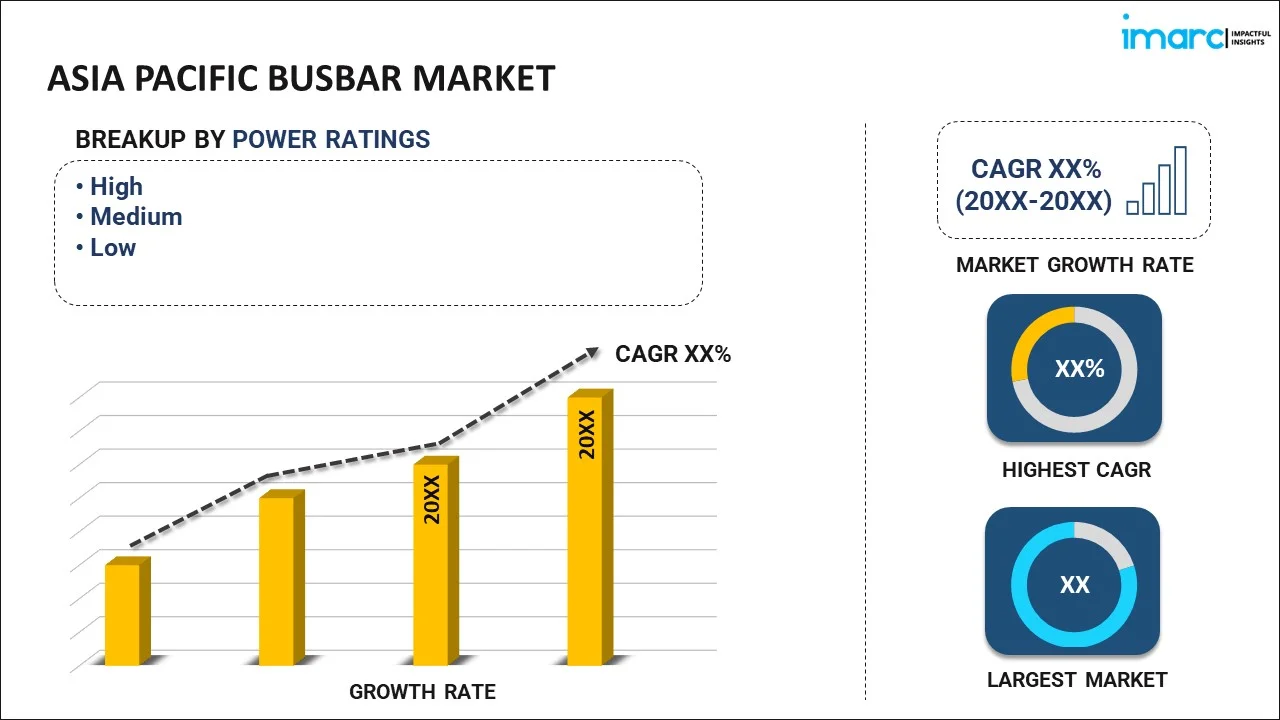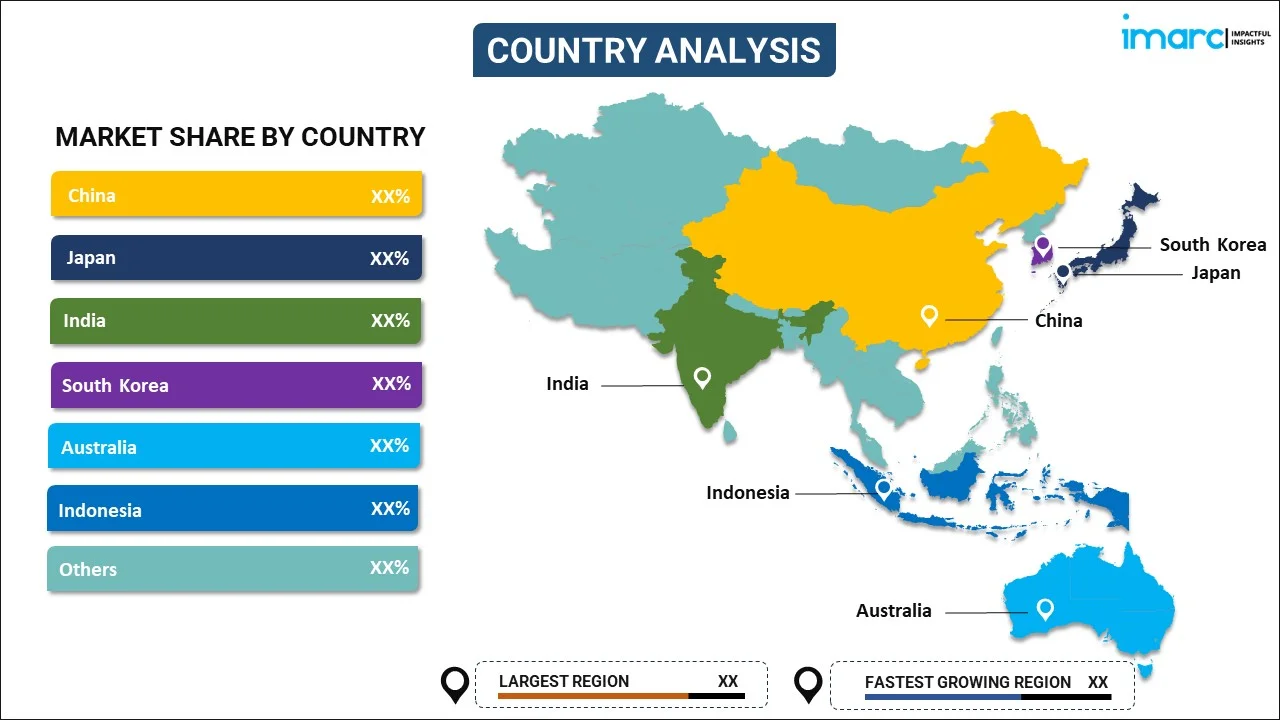
Asia Pacific Busbar Market Report by Power Rating (High, Medium, Low), Conductor (Copper, Aluminium), End-User (Industrial, Commercial, Residential, Utilities), Industry (Chemicals and Petroleum, Metals and Mining, Manufacturing, and Others), and Country 2025-2033
Market Overview:
The Asia Pacific busbar market size reached USD 9,070.3 Million in 2024. Looking forward, IMARC Group expects the market to reach USD 16,015.9 Million by 2033, exhibiting a growth rate (CAGR) of 6.2% during 2025-2033.
|
Report Attribute
|
Key Statistics
|
|---|---|
|
Base Year
|
2024 |
|
Forecast Years
|
2025-2033
|
|
Historical Years
|
2019-2024
|
|
Market Size in 2024
|
USD 9,070.3 Million |
|
Market Forecast in 2033
|
USD 16,015.9 Million |
| Market Growth Rate (2025-2033) |
6.2%
|
A busbar is an electrical conductor that operates by collecting electric current from the incoming feeders and distributing it to outgoing feeders. It grounds and conducts electricity at the same time, and connects several circuits in a system. It is generally coated with materials that provide different conductivity limits and variations. The rising utilization of electricity across the residential, commercial and industrial sectors is driving the demand for busbars in the Asia Pacific region.
A significant rise in the demand for uninterrupted and reliable power supply, in confluence with the increasing adoption of renewable energy sources for power generation, represents one of the key factors impelling the market growth in the Asia Pacific region. Furthermore, as busbars are reliable, cost-efficient, environment-friendly, and require few installation materials and employ reusable and re-locatable plug-in outlets, they are gaining traction over cables across the region. Apart from this, governments of several countries are increasing their investments in grid expansion and modernization. They are also implementing energy-saving programs to improve energy efficiency across commercial facilities. This is projected to create a positive outlook for the market in the coming years.
Key Market Segmentation:
IMARC Group provides an analysis of the key trends in each segment of the Asia Pacific busbar market report, along with forecasts at the regional and country levels from 2025-2033. Our report has categorized the market based on power rating, conductor, end-user and industry.
Breakup by Power Rating:

- High
- Medium
- Low
Breakup by Conductor:
- Copper
- Aluminium
Breakup by End-User:
- Industrial
- Commercial
- Residential
- Utilities
Breakup by Industry:
- Chemicals and Petroleum
- Metals and Mining
- Manufacturing
- Others
Breakup by Country:

- China
- Japan
- India
- South Korea
- Australia
- Indonesia
- Others
Competitive Landscape:
The competitive landscape of the industry has also been examined along with the profiles of the key players.
Report Coverage:
| Report Features | Details |
|---|---|
| Base Year of the Analysis | 2024 |
| Historical Period | 2019-2024 |
| Forecast Period | 2025-2033 |
| Units | Million USD |
| Segment Coverage | Power Rating, Conductor, End-User, Industry, Country |
| Countries Covered | China, Japan, India, South Korea, Australia, Indonesia, Others |
| Customization Scope | 10% Free Customization |
| Post-Sale Analyst Support | 10-12 Weeks |
| Delivery Format | PDF and Excel through Email (We can also provide the editable version of the report in PPT/Word format on special request) |
Key Questions Answered in This Report:
- How has the Asia Pacific busbar market performed so far and how will it perform in the coming years?
- What has been the impact of COVID-19 on the Asia Pacific busbar market?
- What are the key regional markets?
- What is the breakup of the market based on the power rating?
- What is the breakup of the market based on the conductor?
- What is the breakup of the market based on the end-user?
- What is the breakup of the market based on the industry?
- What are the various stages in the value chain of the industry?
- What are the key driving factors and challenges in the industry?
- What is the structure of the Asia Pacific busbar market and who are the key players?
- What is the degree of competition in the industry?
Need more help?
- Speak to our experienced analysts for insights on the current market scenarios.
- Include additional segments and countries to customize the report as per your requirement.
- Gain an unparalleled competitive advantage in your domain by understanding how to utilize the report and positively impacting your operations and revenue.
- For further assistance, please connect with our analysts.
 Inquire Before Buying
Inquire Before Buying
 Speak to an Analyst
Speak to an Analyst
 Request Brochure
Request Brochure
 Request Customization
Request Customization




.webp)




.webp)












